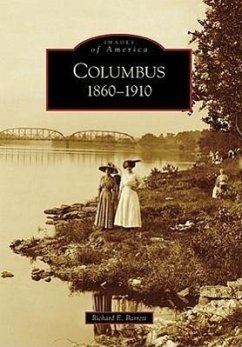In 1798, a settlement named Franklinton sprouted up on the west bank of the Scioto River, just below the Olentangy River. The Ohio legislature accepted a proposal in 1812 for the high bank east of the Scioto River, across the river from Franklinton, to be the site of the capital city. The location was given the name Columbus, even though it had no inhabitants at the time. Columbus grew quickly and became the county seat. The arrival of the National Road, the Ohio Canal, and the railroads contributed greatly to Columbus's growth. This capital city developed first as a transportation hub, then as a manufacturing center, and finally as the commerce, education, and government center that it is today. Columbus: 1860-1910 explores the rich history of this amazing city through vintage images of its citizens, businesses, organizations, and historic events.
Bitte wählen Sie Ihr Anliegen aus.
Rechnungen
Retourenschein anfordern
Bestellstatus
Storno

